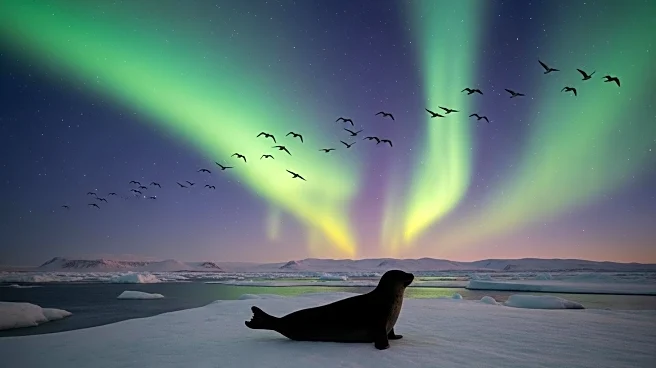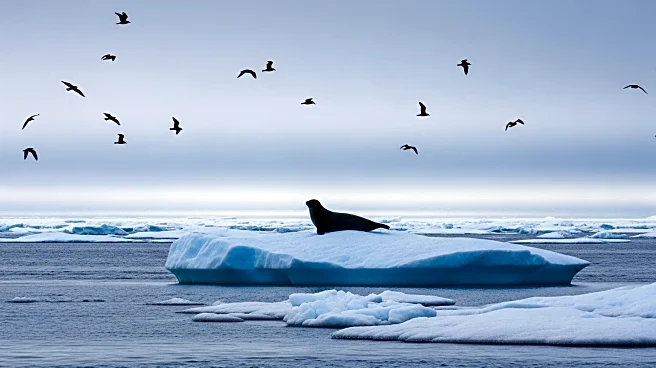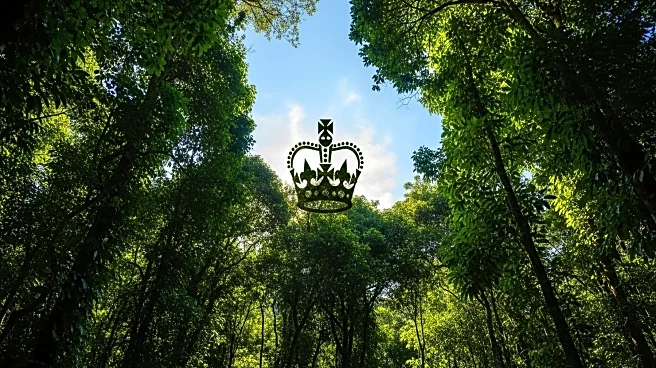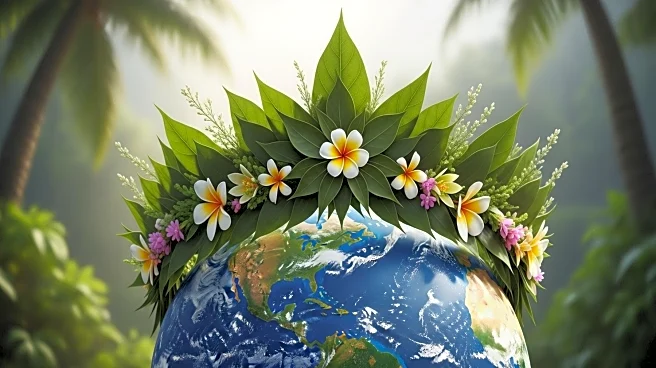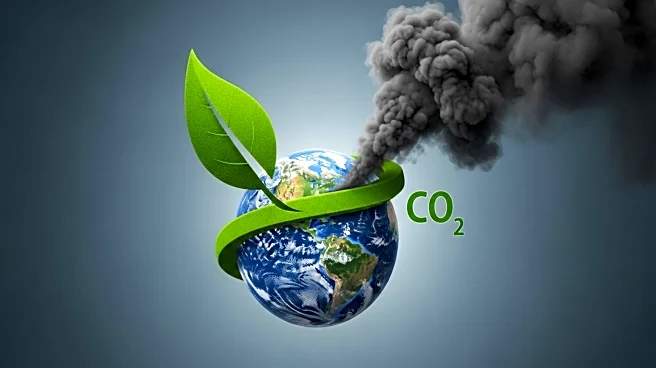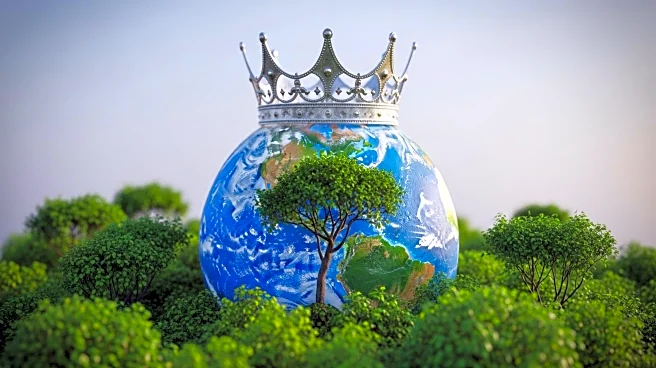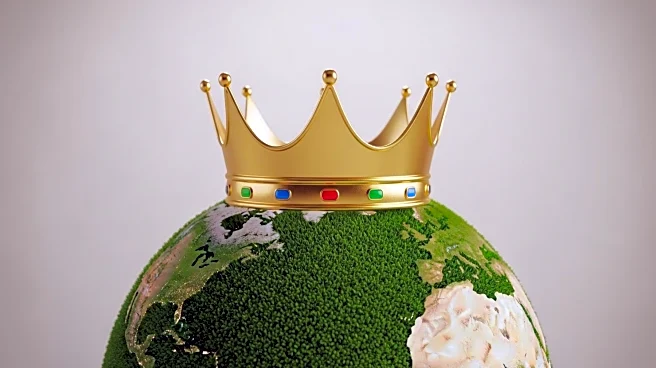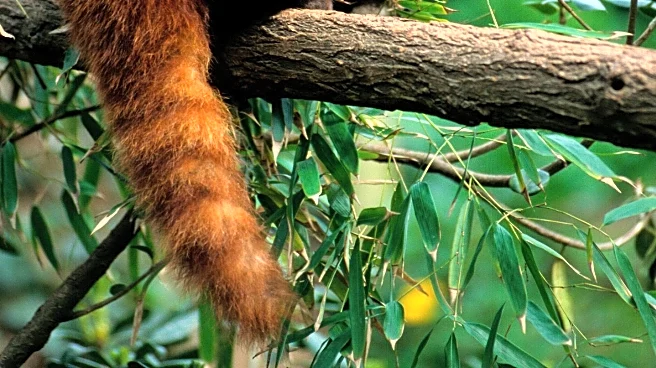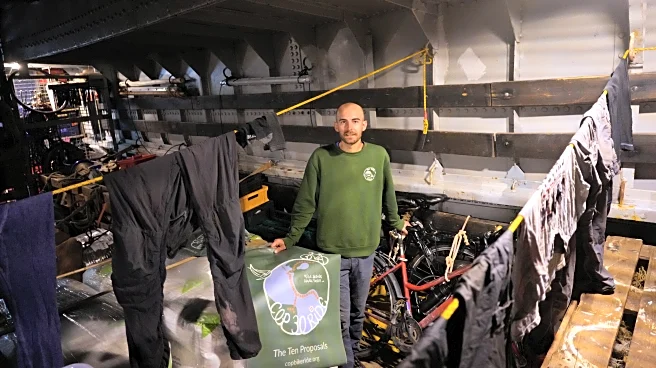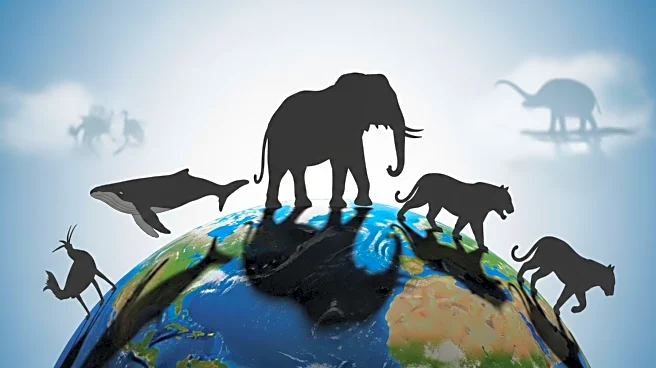What's Happening?
The latest update from the International Union for Conservation of Nature (IUCN) Red List reveals alarming threats to biodiversity, with Arctic seals facing extinction due to melting sea ice and half of the world's bird species in decline due to habitat loss. The report, released at the IUCN World Conservation Congress, assesses 172,620 species, with 48,646 at risk of extinction. Arctic seals, including the hooded, bearded, and harp seals, are particularly vulnerable as the Arctic warms rapidly. The decline in bird populations is attributed to deforestation and habitat degradation, with regions like Madagascar, West Africa, and Central America being severely affected. Despite these challenges, the green sea turtle has shown recovery due to successful conservation efforts.
Why It's Important?
The findings underscore the critical state of global biodiversity and the urgent need for conservation efforts. The decline in Arctic seals and birds has broader ecological implications, affecting food webs and ecosystem balance. The loss of bird species impacts pollination, pest control, and seed dispersal, which are vital for maintaining healthy ecosystems. The report serves as a call to action for governments and conservationists to prioritize biodiversity protection, as the health of ecosystems directly influences climate stability and human well-being. The success story of the green sea turtle demonstrates that coordinated conservation efforts can lead to positive outcomes, offering hope for other endangered species.
What's Next?
The IUCN World Conservation Congress provides a platform for stakeholders to collaborate on strategies to address biodiversity loss. The upcoming UN Climate Change Conference (COP30) in Brazil will be crucial in integrating biodiversity conservation into climate action plans. The IUCN emphasizes the need for targeted investments in conservation, using the Red List as a guide to prioritize efforts where they will have the greatest impact. Continued monitoring and reassessment of species are essential to adapt strategies and measure progress. The focus will be on enhancing international cooperation and resource allocation to tackle the drivers of biodiversity loss effectively.
Beyond the Headlines
The decline in biodiversity raises ethical questions about humanity's responsibility to protect the natural world. The interconnectedness of climate change and biodiversity loss highlights the need for holistic approaches to environmental challenges. The cultural significance of species, such as Arctic seals and birds, to indigenous communities adds another layer to conservation efforts. Long-term shifts in ecosystem dynamics could lead to unforeseen consequences, emphasizing the importance of proactive measures. The role of technology in monitoring and conserving biodiversity is increasingly vital, offering tools for data collection and analysis to inform policy decisions.

